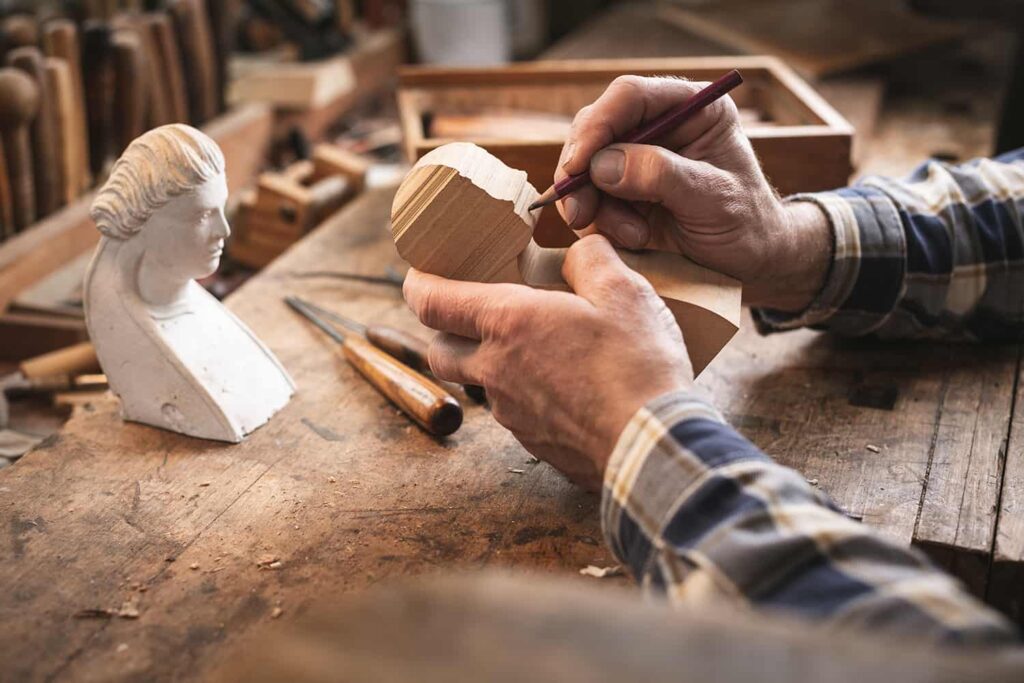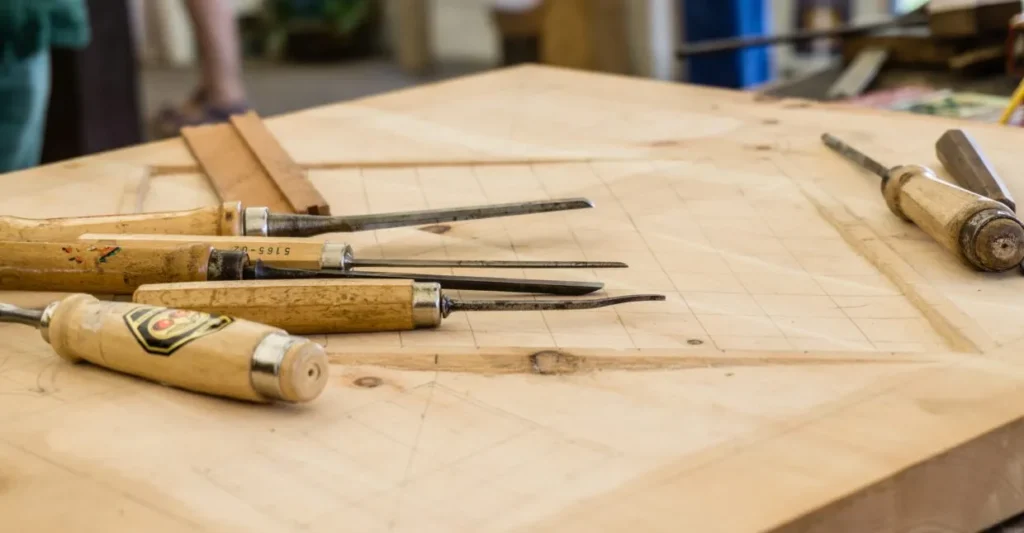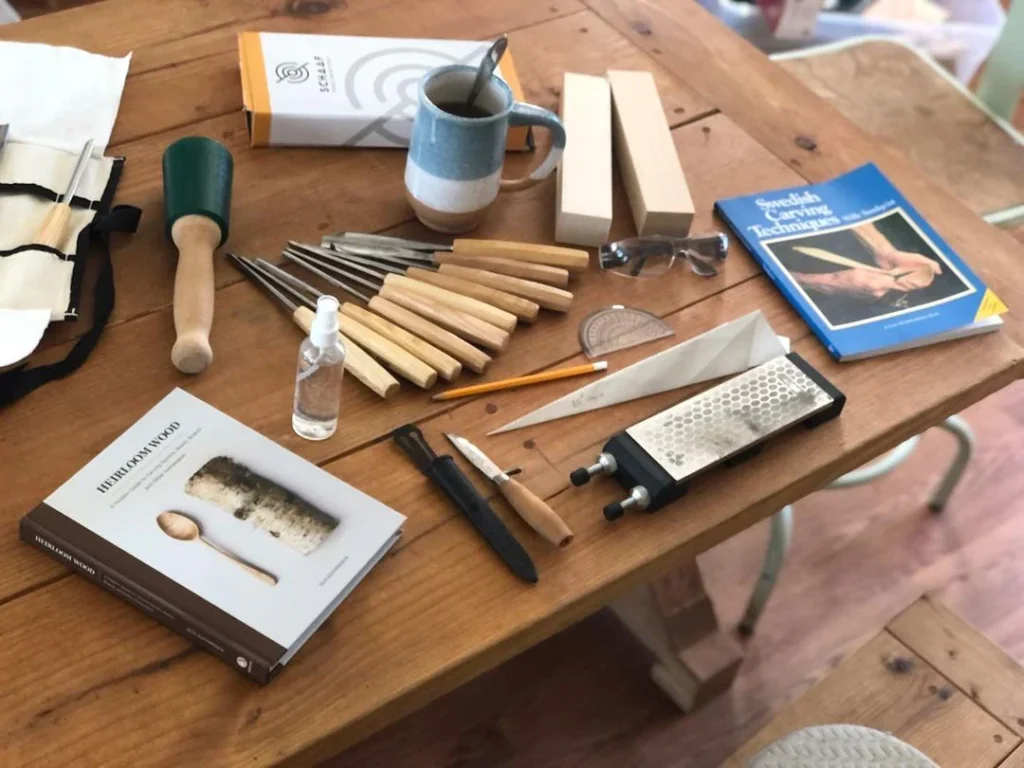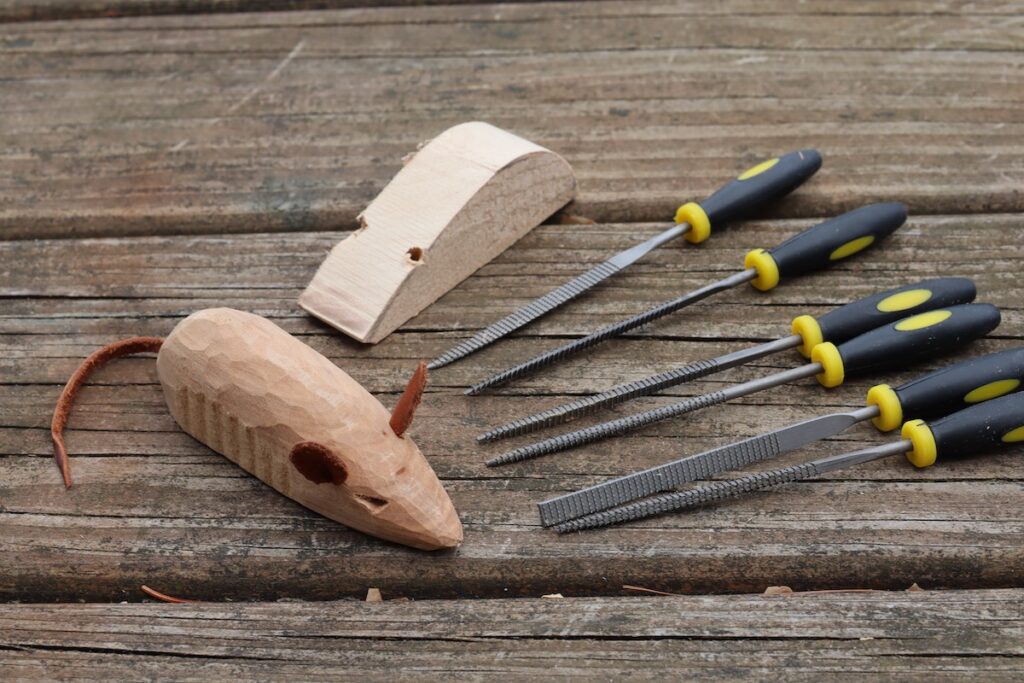Wood carving is both an art and a craft that transforms simple wood into intricate designs and shapes.
Embarking on a wood carving journey is a gratifying endeavor, allowing individuals to channel their creativity and craft intricate masterpieces from a simple block of wood. However, the success of any carving project is heavily dependent on two crucial factors: the quality of the wood chosen and the sharpness of the carving tools. This guide endeavors to offer a comprehensive exploration of these elements, providing insights into where to find high-quality carving wood and how to maintain the razor-sharp edge of your carving knives.
Visit https://masteroakco.com/collections/all to discover the perfect wood carving elements for your next project or to add a touch of elegance to your space.
Where Can I Buy Wood for Carving: Masteroakco’s Top Picks
Finding the right wood for your carving project is crucial. Different types of wood have varying hardness, grain patterns, and colors, which can significantly impact the outcome of your work. Masteroakco, a renowned name in the wood carving community, suggests looking for specialized lumber yards or online retailers that offer a wide variety of carving woods. Ideal choices for beginners include basswood, butternut, and pine, known for their softness and ease of carving.
Online Retailers Versus Local Shops
While local shops offer the advantage of seeing and feeling the wood before purchase, online retailers often provide a broader selection and competitive pricing. When purchasing online, make sure to read descriptions and reviews carefully to ensure the quality of the wood.
How to Sharpen Wood Carving Knives: Mastering the Technique

Source: restless.co.uk
Sharp tools are essential for effective and safe wood carving. Dull knives not only make the process more challenging but also increase the risk of accidents. Sharpening your wood carving knives involves several steps:
Choosing the Right Sharpening Tools
Select sharpening stones or strops that suit your tool’s steel type. Coarse stones are ideal for reshaping or repairing blades, while finer grits are used for honing and polishing the edge.
Sharpening Process
Start with a coarse stone to shape the edge, then gradually move to finer grits for polishing. Maintain a consistent angle throughout the process for an even edge. Stropping on leather with honing compound can give your knives a razor-sharp finish.
Where to Get Wood for Carving: Exploring Local and Online Options
In addition to Masteroakco’s recommendations, exploring local wood carving clubs or workshops can be a great way to find quality carving wood. These places often have seasoned carvers who can provide valuable advice and may even have wood available for sale or trade.
Sustainability and Ethical Sourcing
When sourcing wood for carving, consider the sustainability and ethical practices of the suppliers. Opt for woods that are harvested responsibly and support eco-friendly initiatives.
Carving Wood Types: Understanding the Best Choices
Different projects require different types of wood. Hardwoods like oak and walnut are ideal for detailed work, while softer woods like basswood are better for beginners. Understanding the characteristics of various woods can help you choose the right material for your project.
The Role of Grain and Texture
The grain and texture of the wood significantly affect the carving process and the final look of the piece. Woods with a fine, even grain are generally easier to carve and yield smoother finishes.
Essential Carving Tools: Beyond Knives

Source: gathered.how
While knives are a fundamental part of wood carving, other tools like gouges, chisels, and mallets play vital roles. Investing in high-quality tools and learning how to use them correctly can greatly enhance your carving experience.
Maintenance and Care
Regular maintenance of your tools, including cleaning and sharpening, is crucial for their longevity and performance. Store them properly to prevent damage and rust.
Nurturing Your Carving Skills: Workshops and Online Tutorials
Developing your wood carving skills requires practice and guidance. Participating in workshops or online tutorials can accelerate your learning curve. Experienced carvers often share tips on wood selection, tool handling, and carving techniques, which can be invaluable for beginners and intermediate carvers alike.
The Importance of Community in Learning
Joining a community of woodcarvers, either locally or online, can provide support, inspiration, and knowledge sharing. Engaging with others allows you to exchange ideas, learn from each other’s experiences, and stay motivated.
Creative Projects: Ideas to Start With
Once you have your tools and wood ready, start with simple projects like spoons, bowls, or small figurative sculptures. These projects help you understand the basics of wood grain, tool handling, and shaping techniques.
Advancing to Complex Designs
As you gain confidence and skill, you can move on to more complex projects like relief carving, intricate figurative work, or even large-scale sculptures. Each project will challenge and refine your skills further.
Wood Finishing: The Final Touch

Source: schaaftools.com
After carving your piece, finishing is crucial. Sanding, oiling, or varnishing can enhance the wood’s natural beauty and protect your work. Experiment with different finishes to see how they affect the wood’s color and texture.
Eco-friendly and Safe Finishing Options
Choose finishes that are environmentally friendly and safe to use. Water-based varnishes and natural oils like linseed or tung oil are great choices that are less harmful to both the environment and your health.
Showcasing Your Work: From Hobby to Art
Once you complete a few projects, consider showcasing your work. Social media platforms, local art fairs, or community events are great places to start. Sharing your work can open up opportunities for feedback, commissions, or even exhibitions.
Building a Portfolio
Create a portfolio of your work, including photographs and descriptions of each piece. A well-maintained portfolio is not only a record of your progress but also a tool to attract potential buyers or galleries if you decide to pursue wood carving more professionally.
Continuing Education and Skill Enhancement

Source: popularwoodworking.com
Wood carving is an evolving art, with new techniques and styles emerging regularly. Stay updated by attending seminars, subscribing to carving magazines, or following prominent carvers and educators in the field.
Experimentation and Personal Style Development
Don’t be afraid to experiment with different styles and techniques. Over time, you will develop your unique style, which will become your signature in the carving community.
Masteroakco: A Partner in Your Carving Journey
Remember, Masteroakco is there to support you with quality materials and expert advice. Revisit their offerings as you grow in your carving journey, and don’t hesitate to reach out to them for guidance or materials.



